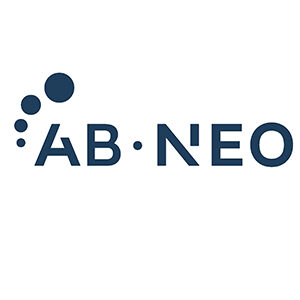Importance of broiler flock uniformity

Can uniform poultry flocks be considered healthier? Or does poor uniformity indicate poorer performance or, indeed, animal welfare? These are valid questions, especially when non-uniform chicks are received from the hatchery with no advance notice.
Poor uniformity does affect flock performance and welfare across all chicken subspecies. When egg laying birds reach sexual maturity, it’s the bird’s individual weight at that time which determines the start of production. So underweight pullets will have a delayed onset of egg production, while those that are overweight will start early. Thus, poor uniformity may cause performance issues in both breeder and layer operations. Here we will focus on commercial broilers, as uniformity issues are more common there.
Measuring uniformity
To appreciate its importance, we must define and measure uniformity. Bodyweight variability is the determinant, with two ways to measure it. Firstly, there is coefficient of variation, the spread of bodyweight within the flock and, secondly, uniformity (percent), the similarity of bodyweight within a flock. Coefficient of variation (CV%) is the standard deviation divided by the mean bodyweight of the flock (measures dispersion values around the mean). Therefore, a large CV shows a wide variation, while a low CV indicates less variability. Uniformity indicates the percentage of flock that falls within a certain range of the average flock bodyweight (mean). This certain range is usually ±10% of the mean. So, the greater the uniformity, the less variable a flock is.
While there is little scientific data available, a broiler flock with 10-12% CV at 40-42 days is considered uniform. Links between high flock CV and increased week one mortality, total mortality, and slaughterhouse rejection, as well as poor FCR and growth rates, have been seen in multiple global trials. But where does the variability come from and what is making it worse with age?
Sources of variation
Poor uniformity originates from various sources, including poor farm management. However, external factors may have a greater influence, such as the breeder farm. Non-uniform breeder flocks produce uneven eggs, with larger eggs producing larger chicks and vice versa, thereby creating variable day-old chick weights and sizes. Hatcheries may be another source. They obviously receive eggs from multiple breeder farms with different production capacities, flock ages and egg quality. They then supply the chicks to multiple broiler units. With some farms now taking over 50,000 birds per house, it is difficult to source one unique flock which thus usually comprises multiple breeding flocks of different ages. Inevitably, poor uniformity will be widespread, hence the need for tools to address unexpected issues.
Controlling variation
There are some non-dietary measures available to control poor uniformity, e.g. ‘precise environmental control’ or ‘heavy culling’ to remove smaller chicks. However, it is virtually impossible to control or improve uniformity without adopting specific dietary measures. Uniformity itself is a critical performance measure when optimising broiler diets and feeding regimes. Uniformity decreases with marginally protein-deficient feed. Birds may over-consume energy if feed is deficient in essential nutrients, such as amino acids, with variation in some who show only a small weight reduction compared with others exhibiting much poorer growth. The deficiency must be rectified early or uniformity remains poor and worsens with age.
On paper, a formulation is carefully calculated based on each bird reaching its potential without issues. In reality, digestibility and subsequent availability of essential nutrients may differ within the flock. Evidence suggests that broiler performance depends on the inherent genotype of the flock population and, therefore, supporting optimum feed intake with highly digestible, good quality ingredients with minimal anti-nutritive levels is the best approach.
A recent trial looking at gut performance tested AlphaSoy Gold (ASG) as a means to improve uniformity in an uneven flock. Despite planning for individual chicks from a one-parent flock, the supplying hatchery failed and poor quality, uneven chicks were delivered. At day 7, all groups showed poor uniformity while unexpected hot and humid weather up to day 21 did not help the situation either. However, with age, the AlphaSoy Gold diet markedly improved bodyweight uniformity (Table 1).
Net profit
Chick condition and the weather compromised all performance, but for the rations containing ASG final day bodyweight increased by 37 grams and overall FCR was reduced by 2 points. Based on broiler feed cost and the live weight value at the time (€ 1.20/kg), this improvement resulted in an increased net profit of € 36,000 per cycle (per million broilers), including the cost of ASG in starter 1 and 2 rations from day 0-21. In conclusion, the highly digestible product with consistent functional ingredients increased the digestibility of key amino acids by up to 2%. Anti-nutritive levels were reduced and the protein digestion kinetics of soybean meal were considerably improved by reducing resistant protein and increasing rapidly-digestible protein. Adding this type of ingredient optimises feed intake in young birds and, therefore, will improve flock uniformity considerably.
Author: Mark Karimi, AB Neo



